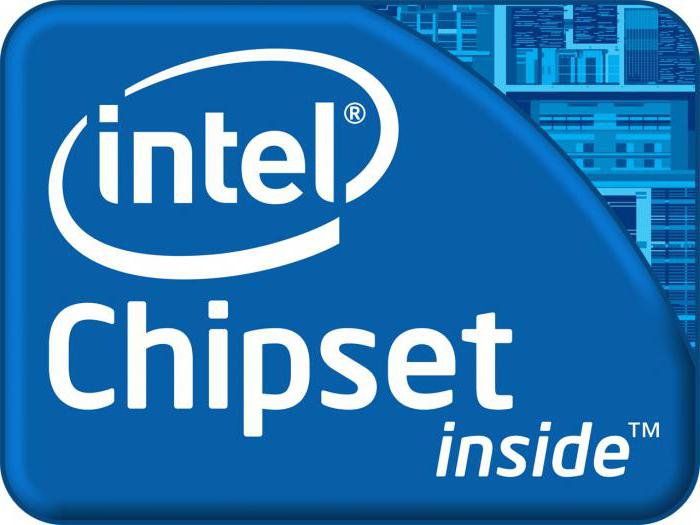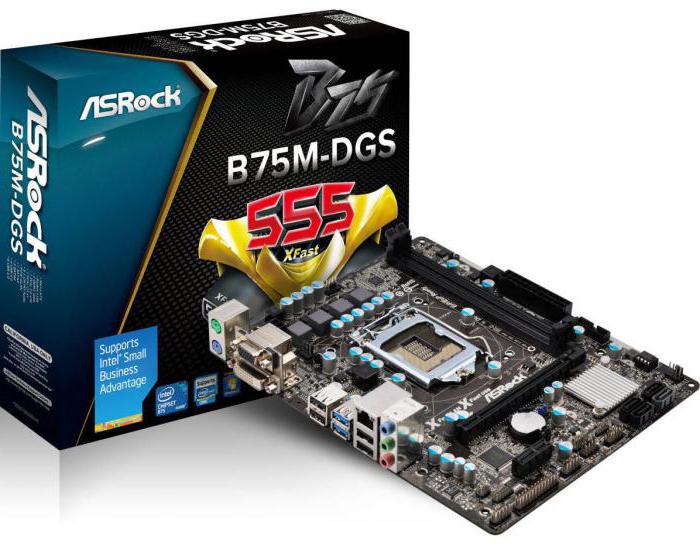A motherboard such as the ASRock B75M-DGS is designed to build personal computers. Its functionality is much better than that of entry-level products, but at the same time it certainly does not reach the premium class. It is this computer accessory that will be examined in detail and in stages in this material.
What system units is this motherboard designed for
In the framework of the computing platform LGA1155, the system logic sets were distributed as follows:
The initial level was occupied by solutions based on H61. The minimum level of functionality and a very affordable price made them simply uncontested.
The premium segment was initially occupied by products based on the Z68. Then it was supplemented by the Z77.
The rest of the chipset models belonged to mid-level solutions. Including B75, on the basis of which the motherboard considered in the framework of this material was manufactured.
Equipment
A typical list of components, as for a mid-range solution, could boast a motherboard. It included the following:
Motherboard.
Application software disk for ASRock B75M-DGS. Service utilities for diagnosing the state of a computer system and all the necessary drivers were part of it.
2 SATA format interface cords .
Cover for the I / O panel for the back of the computer case.
Multilingual manual for installing, configuring and operating the system board.
The above list is enough to build and run a computer system based on the motherboard in question.
Product layout. Location of the main elements of this product
Overall dimensions ASRock B75M-DGS R 2.0 belonged to MicroATX format solutions . Its length was 226 mm and its width was 183 mm. As a result, this motherboard perfectly suited both for compact miniature system units and for ATX full-sized computer cases. The processor socket LGA1155 was located just above the central axis of the board. And almost in the middle of the latter. To the right of it are two slots for installing RAM strips. Even closer to the edge behind them was the main power connector. To the left of the connector is an I / O panel with peripheral ports . This board has only one slot for installing a discrete graphics subsystem, which is located just below the processor socket. Still lower and to the left of it is the only slot for installing the internal controller, and lower and to the right is the only chip in the logic set called the South Bridge.
System Logic Chipset
As you can easily determine from the designation, the ASRock B75M-DGS motherboard was based on the B75 chipset. In essence, as noted earlier, this set includes only one element - the South Bridge. The second component, called the "North Bridge", was integrated into the processor device. The thermal package of this set of system logic is declared at 6.7 watts. The release of the 7th series of chipsets was timed to coincide with the release of the 3rd generation of chips based on the architecture codenamed IvyBridge, but you can also install chips from the previous SandyBridge family in these motherboards.
CPU socket. Its features
At the heart of this solution, as noted earlier, is the processor socket LGA1155. As it is easy to understand from his designation, he included 1155 contacts. This socket was designed to install chips of the Core architecture , which belonged to its 2nd or 3rd generation. Later, more recent LGA1150 and LGA1151 sockets were released , which boast more recent processor solutions and a higher level of performance. As a result, LGA1155 at the current moment certainly cannot be called relevant from the standpoint of performance and energy efficiency.
Processor list
The ASRock B75M-DGS motherboard, as noted earlier, allows the installation of SandyBridge processors and their more recent IviBridge modification . This list includes:
The segment of office computing systems was occupied by Celeron chips . Very modest technical specifications and minimal cost really made an uncontested choice in this price category.
The high-speed performance, which is already enough for organizing an entry-level PC, Pentium solutions boasted . The increased size of integrated fast memory, increased clock speeds and higher values of the operating frequency provided superior performance in terms of this solution in all tasks over younger models. But the cost in this case, albeit slightly, but still increased.
In this case, Core i3 belonged to middle-class microprocessor products . As in most previous models, they included 2 computing modules. But the availability of NT technology support at the hardware level made it possible to turn them at the system software level into 4 information processing streams. As a result, such processor devices even now allow you to run the most complex tasks.
The premium segment was filled with chips of the i5 and i7 series . The increased number of physical cores, larger cache size, increased clock frequencies and the ability to dynamically control the operating frequency allowed these semiconductor products to combine a high level of speed and excellent energy efficiency. The difference between these two CPU families was that the former did not implement NT technology, while the latter supported it. As a result, the i7 at the operating system level already looked like 8-core chips.

RAM
The built-in dual-channel RAM controller is equipped with ASRock B75M-DGS. Its characteristics indicate that it supports only one type of RAM - DDR3, and it is part of the CPU . For chips of the SandyBridge generation , the maximum frequency of the slats is set at 1333 MHz, and for IviBridge - 1600 MHz. The maximum amount of installed RAM is 16 GB. When using the integrated graphics subsystem, part of the RAM will be reserved for the needs of the video card.
Expansion options
Typical features, as for a middle-class solution, the installation of internal expansion controllers are implemented on this motherboard. There are only 2 such slots. One of them - PCI-E in version 16X - is designed to install a graphics accelerator. In this case, based on this product, you can implement a powerful gaming system that allows you to run even the most demanding and resource-intensive toys. The second slot is the same PCI- E, but it is already 1X. It is great for installing new versions of internal expansion controllers. It can be a TV tuner, a network card, or a modem. Specifically, this list lacks a PCI expansion slot. With its help, this solution would become more universal and would even allow installing the currently outdated version of expansion controller cards. However, with such miniature dimensions of the motherboard, there simply was no place for such an expansion slot, but support for this bus, which is outdated today, is nevertheless declared at the level of the system logic set.

Peripheral kit
An excellent peripheral port set is implemented as part of the ASRock B75M-DGS. It included the following:
2 ports for manipulator and keyboard format PS / 2.
One analog graphic port for image output - VGA and one digital for the same purpose - DVI.
4 USB format ports version 2.0 and 2 exactly the same ports, but already in version 3.0.
1 connector for connecting a PC to a RJ-45 format LAN .
6 identical speaker ports - 3.5 mm audio jacks.
Integrated graphics
The integrated graphics subsystem was equipped with ASRock B75M - DGS. Again, the connectors and wiring of the video card were made on the motherboard. But its semiconductor part itself was part of the CPU and was determined by its model. It should also be noted that in this case part of the installed RAM in the computer was reserved for the needs of the integrated graphics accelerator, which essentially turned into a video buffer.
Motherboard software
The key software component that can be found on the complete disk with ASRock B75M-DGS is the driver. Windows 7 and later versions of this system software with numbers 8 and 8.1 will not be able to fully reveal the potential of this component without them. Also, the list of software is supplemented by a whole set of utilities that allow you to monitor the status of the computing system.
Owner reviews
Only on the good side do the owners characterize the ASRock B75M-DGS. In this case, the drivers really boast a high degree of reliability, and the board itself combines excellent functionality for both mid-level and MicroATX format solutions and affordable cost. With this solution, you can organize both a simple office system unit and a powerful gaming system that can handle any task today. It is also necessary to note the energy efficiency of this product, which meets the latest highest requirements. But the disadvantages of this solution do not exist.
Summary
Practically in no way inferior to more recent similar solutions ASRock B75M-DGS. But at the same time, the cost of this motherboard is significantly lower. All this in sum still allows us to consider it as the basis for the assembly of a modern computing system. Moreover, both the entry-level and the most productive gaming system.